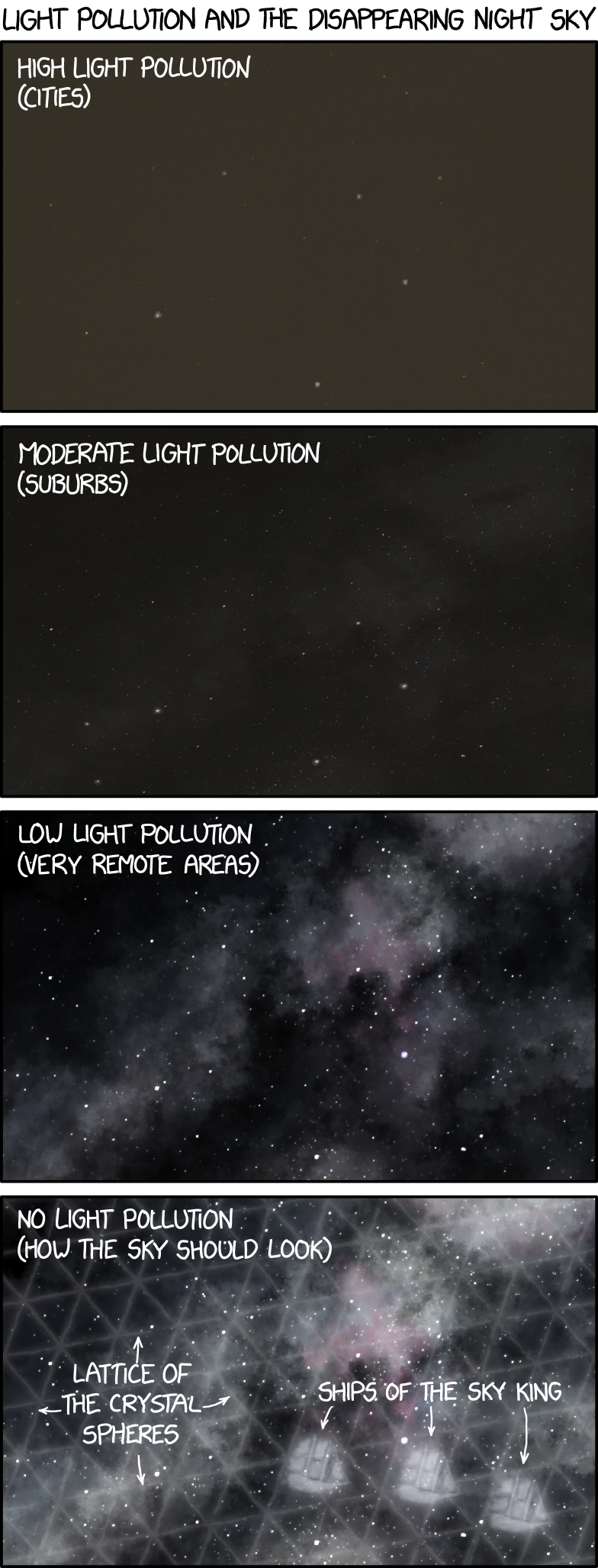I wanted the subject to say
At last,
the 1948 showSunday's lunar eclipse photos!, but you can't embed HTML in post subjects. *sigh*
Things learned:
- 3 fused vertebrae in my neck makes high elevation photography a literal pain!
- Important - while phone is connected to the network, check camera time settings!
- I should try an experiment with the next full moon to see if the spot meter mode on my camera will yield accurate moon exposures. Don't know if that'll help with the next lunar eclipse, and thinking about it, it probably won't, but it might give me a better baseline exposure that I can compensate from more accurately.
- PACK THE FIRK-DING-BLAST RIGHT ANGLE VIEWFINDER ADAPTER! (see first item in list)
- Tracking telescope mount would be so marvelous to have! Canon has software that lets you control their DSLRs from a laptop via a USB cable. I think, but I'm not certain, that they give you an API set that you can write software to control the exposure. This might be handy in an eclipse setting.
I believe we're GMT -6, maybe -7. Can't remember. I was pleased that my SL1 clock was only 3 minutes slow, my 6D and Lumix were both spot-on for their clock setting. The weather worked in our favor: the temperature was slightly above freezing, but the really nice nice bit was that the wind was from the north and we were on the entrance patio on the south side - no icy blast! I didn't wear gloves at all and though my hands were decidedly cold, I had no problems working my cameras.
Almost all of these images, and unless otherwise noted, were taken with my SL1 with a 75-300 zoom at 300mm. Because the SL1 uses an APS-C sensor that is smaller than a 35mm negative's 24x36mm frame size, it causes a 1.6x focal length multiplier, making that 300mm effectively a 480mm telephoto, or for all practical purposes, a 500mm. Using Photoshop's ruler tool, if I'm using it right, the moon is taking about 655 pixels width - that's not a lot of resolution! But it's all the pixels that I've got until I get a lot more money to drop $2k on a lens and $4k or so on a body.
That ain't happenin' soon.
With most of these photos, they're not zoomed. I cropped them to a square format to center the moon, but otherwise this is 100% the frame size. I always shoot RAW + JPEG, so every exposure gives me two files: the raw sensor take plus a JPEG, where the camera does some optimizations and compresses the files. In my normal shooting, I always use the raw file and do some manipulations in Photoshop and usually get a better image than the JPEG. I've been doing some work on these images now and then since the eclipse on the raw files and I just haven't been happy with the results, then tonight I had an idea: why don't I take a look at the JPEGs! They've already been optimized by the camera, and honestly, the camera does a perfectly adequate job for posting online, so maybe they're good enough.
And by gosh and by golly, they mostly are!
So here's my eclipse photos from Sunday night!
One more thing about the SL1. It's one of Canon's earlier Eos cameras with a touch-screen LCD back, and it had a feature that I had forgotten about that proved very useful. If you use it in preview mode, it locked the mirror up and turns the LCD display into a live viewfinder. Fairly normal feature. But if you tap on your subject where you want it to focus, it focuses. OK, that's cool. Tap the subject a second time: it takes a photo! Proved very handy when shooting from a tripod and having trouble squatting down to look through a viewfinder!
I've embedded the timestamp and exposure in the lower right corner of each photo. As the aperture number increases, less light goes through the lens. Likewise, as the shutter speed increases, less light. As the ISO number increases, the sensitivity of the camera increases, so it needs to go up as the eclipse fullness increases and the moon becomes darker.

This first photo is early on in the eclipse, which ran from 20:36MST to 02:48.
The rest of the photos are under this cut, and as usual, clicken to embiggen.
( Read more... )


















